#16thcentury
Photo

Villa Medici, the Mannerist Villa of Grand Duke and Cardinal Ferdinand de’ Medici, now the French Academy in Rome. The Villa, and its idyllic gardens, are a ‘must-visit’ when in Rome, to escape the bustling crowds of the nearby Spanish Steps. The bordering Borghese Gardens and Galleria Borghese are two of my favourite places to visit. Of course, no trip to Rome would be complete without a stop at the famous Harry’s Bar, which is just a short walk from the Borghese Gallery. Photography by a François Halard #villamedici #rome #italy #frenchacademyinrome #louisxiv #francoishalard #villa #mannerism #mannerist #spanishsteps #galleriaborghese #borghesegardens #harrysbarroma #interior #interiors #16thcentury #decor #design #decoration #interiordecor #interiordecorating #interiordecoration #interiordecorator #interiordesign #interiordesigner #sculpture #bust #furniture #renaissance #art (at Villa Medici) https://www.instagram.com/p/CpQJRHzIIRQ/?igshid=NGJjMDIxMWI=
#villamedici#rome#italy#frenchacademyinrome#louisxiv#francoishalard#villa#mannerism#mannerist#spanishsteps#galleriaborghese#borghesegardens#harrysbarroma#interior#interiors#16thcentury#decor#design#decoration#interiordecor#interiordecorating#interiordecoration#interiordecorator#interiordesign#interiordesigner#sculpture#bust#furniture#renaissance#art
206 notes
·
View notes
Photo

Empire of Salons: Conquest and Community in Early Modern Ottoman Lands
Empire of Salons came from Helen Pfeifer's PhD thesis, which she completed at Princeton University, thus this book is largely targeted to the academic audience, both lecturers and students. It, however, has a concise and organized structure as it follows the story of a young scholar from Damascus, Badr al-Din al-Ghazzi (d. 1577). Taking this human interest perspective makes the book generally readable to anyone with an interest in Ottoman history or the history of learning. The idea of meeting spaces where the intellectually inclined come together to debate and discuss various subjects is something every country and time period is familiar with. Institutions such as universities, literary salons, and coffeehouses all host such gatherings.
This book offers a focused perspective on an institution that, until this time, is well-known but has not seen a dedicated work that explains it to this standard.
This book goes one step further than simply describing the scholarly institution and its key players as it also connects to a larger recognized theme in Ottoman history: continuity. Once the Ottomans conquered an area, they usually adopted and adapted pre-existing institutions and systems to ease the transition and to co-opt any aspect of the conquered society they felt valuable. In this case, Pfeifer focuses on the aftermath of the 1516-1517 conquests of Egypt and Syria, demonstrating how scholarly salons played a key role in integrating these new territories into the wider empire during the 16th century.
Continue reading...
57 notes
·
View notes
Text
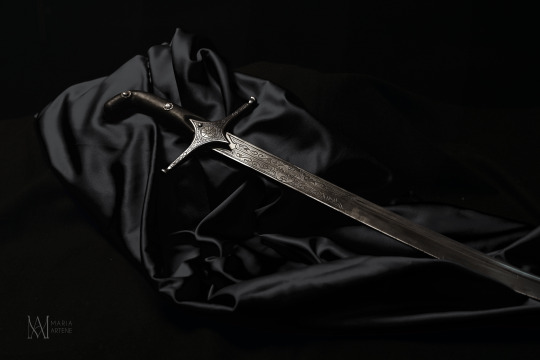
Ottoman shamshir saber replica
made by Ignis Vultus historical reenactment association
#photography#lowkeyphotography#dark academia#dark acadamia aesthetic#medieval#middle ages#16thcentury#1500s#ottoman#ottoman empire#sword#sabre#saber#weapons and arms#swords#history#historical#reenactment#historical reenactment#blacksmithing#europe
35 notes
·
View notes
Photo

The Solovetsky Monastery is a fortified Christian citadel in northern Russia. Founded by the monks Zosima, Herman, and Savvatiy in 1436, the monastery was a center for a close-knit monastic community for centuries. Unfortunately, it was converted into a special prison camp for social opponents of Stalinism in the Soviet Union. Nowadays, it houses only about ten monks and is inscribed on the UNESCO World Heritage List. The featured icon depicting the monastery was painted in 1680 by an anonymous Russian icon painter.
91 notes
·
View notes
Text

“Per battaglia solamente de meza hora vincemmo la rocha, la Cittadella et l’altra terza parte chiamata el paradiso, cum occisione de circa quatrrocento de quelli de entro che difendendosi perirono, et pigliammo Madonna Catherina Sforza.”
Cesare Borgia a Ercole d’Este duca di Ferrara, 12 gennaio 1500, dal campo a Forlì.
Il 19 dicembre 1499, Cesare Borgia, noto come il Valentino, supportato dalle truppe di Luigi XII, Re di Francia, pose sotto assedio la Rocca di Ravaldino a Forlì. Dopo una settimana di incessanti bombardamenti giorno e notte, il Valentino riuscì a creare una breccia nella Rocca il 12 gennaio 1500, catturando Caterina Sforza insieme a ciò che rimaneva della sua corte. Questo fu l'episodio conclusivo della vita pubblica di Caterina Sforza. Da quel momento in poi, non poté più far ritorno alle signorie di Imola e Forlì. Papa Giulio II affidò questi territori alla famiglia Ordelaffi e Caterina dopo un breve periodo di prigionia trascorse il resto della sua vita a Firenze.
La resistenza solitaria di Caterina fu ammirata in tutta Italia, ispirando la composizione di numerose canzoni ed epigrammi in suo onore. Tra questi, il poeta Marsilio Compagnon che compose una canzone intitolata "Il lamento di Caterina Sforza Riario".
Ascolta questa sconsolata
Catherina da Forlivo
Ch'io ho gran guerra nel confino
Senza aiuto abbandonata
Io non veggo alcun signore
Che a cavallo monti armato
E poi mostri il suo vigore
Per difendere il mio stato
Tutto il mondo è spaventato
Quando senton criar Franza
E d'Italia la possanza
Par che sia profundata
'Scolta questa sconsolata
Catherina da Forlivo...
seguici su FB e INSTAGRAM
www.famaleonis.com
#medieval#caterina sforza#enionline#forli#roccadiravaldino#15th century#cesare borgia#16thcentury#Eugenio larosa#rinascimento#italian renaissance#renaissance
2 notes
·
View notes
Photo
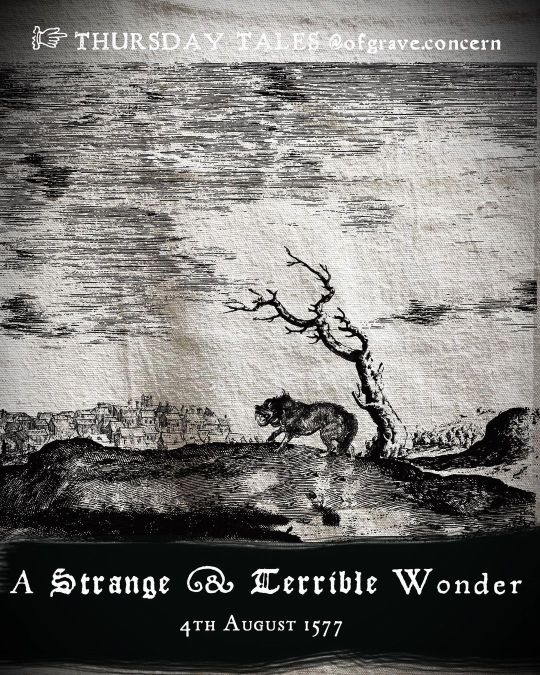
4th August 1577, the infamous sighting of a ghostly black dog in St. Mary’s parish church of Bungay, in the south east of England, during a a great ‘tempest of violent raine, lightning and thunder,’ as the storm shock the church a strange and terrible shaped creature was seen to enter, resembling a hellhound it violently attacked members of the congregation before disappearing. Twelve miles away in the town of Blythburgh, the creature reappeared at the Holy Trinity Church, where it continued its attack of the congregation there. The events were recorded in the same year by the English clergyman, and poet Abraham Fleming (Flemyng). The creature is said to be that of Black Shuck, the name given to a ghostly black dog which is said to roam the coastline and countryside of East Anglia, England. Embedded in the folklore of the area, the name Shuck may derive from the Old English word ‘scucca’ meaning demon or possibly from the local dialect word ‘shucky’ meaning shaggy or hairy. Further north there are also the tales of other spectre dogs, the white ‘Gallytrot’, (‘Gally’ being an old word for fright); and the ‘Barghest’ of York, who enters the city and preys upon travellers in the narrow mediaeval lanes, such as the most famous known as the ‘Shambles’. A Black Dog has also been seen as the site of the Norman motte and bailey castle known as Clifford’s tower, the site of the 1190 massacre of the Jewish population. Despite living for nearly two years opposite the tower, I unfortunately, (or fortunately if the impending doom aspect is to be believed), did not lay eyes upon the creature. (Continued in the comments). #thursdaytales #blackshuck #weirdhistory #darkhistory #cryptids #cryptid #cryptidcore #cryptidsighting #cryptidart #16thcentury #paranormal #paranormalencounters #ghostly #monstersamonguspodcast #portents #ghostdogs #strangehistory #strangehistoryfacts🤔 #mythology #hellhound #hellhounds #mythologicalcreatures #mythsandlegends #mythological #mythologicalart #gothictales #blackdog #cryptozoology #cryptic_aesthetic #paranormalhistory https://www.instagram.com/p/Cg1_ouAOLSn/?igshid=NGJjMDIxMWI=
#thursdaytales#blackshuck#weirdhistory#darkhistory#cryptids#cryptid#cryptidcore#cryptidsighting#cryptidart#16thcentury#paranormal#paranormalencounters#ghostly#monstersamonguspodcast#portents#ghostdogs#strangehistory#strangehistoryfacts🤔#mythology#hellhound#hellhounds#mythologicalcreatures#mythsandlegends#mythological#mythologicalart#gothictales#blackdog#cryptozoology#cryptic_aesthetic#paranormalhistory
29 notes
·
View notes
Photo

#archdukeferdinand #roman #armor #16thcentury #screenwriting #writing #tvwriting #amwriting #film #television #nycgratitude. (at Manhattan, New York) https://www.instagram.com/p/CqYdeMHpIMG/?igshid=NGJjMDIxMWI=
#archdukeferdinand#roman#armor#16thcentury#screenwriting#writing#tvwriting#amwriting#film#television#nycgratitude
5 notes
·
View notes
Photo

16th Century Farmhouse located in Palamos, Girona. Spain. 🇪🇸 Restored: Main Engelhorn The floor is all 19th century oak from England and the ceiling is wooden beams with reused ceramic tiles just like they were in the 17th century. The farmhouse is a national treasure. #Repost @av_interior_architect #farmhouse #bathroom #classicbathroom #interiordesign #interior #architecture #bathtub #bathroomdesign #restored #architecturalantiques #16thcentury #catalan #fireplace #livingroom #kitchendesign #chandelier #ceiling #floor #furniture #interiorinspiration #home #farmhousekitchen #decor #farmhousedecor #stonehouse #palamos #spain #details #historicalarchitecture https://www.instagram.com/p/CfrGMdYD-qI/?igshid=NGJjMDIxMWI=
#repost#farmhouse#bathroom#classicbathroom#interiordesign#interior#architecture#bathtub#bathroomdesign#restored#architecturalantiques#16thcentury#catalan#fireplace#livingroom#kitchendesign#chandelier#ceiling#floor#furniture#interiorinspiration#home#farmhousekitchen#decor#farmhousedecor#stonehouse#palamos#spain#details#historicalarchitecture
3 notes
·
View notes
Text
youtube
#fascinatingfacts#Creepy#MotherShipton#Chilling#Coincidence#tarot#FutureForetold#Psychic#Unexplained#Mystery#England#Folklore#16thCentury#Soothsayer#Clairvoyance#Predictions#Prophecies#Youtube
0 notes
Text
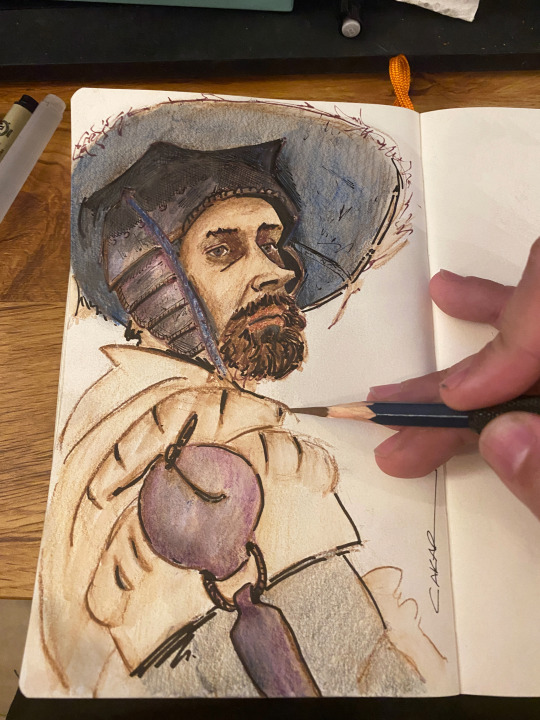
From the sketchbook.
1 note
·
View note
Text
A (mis)adventure in painting: Samuel Barber inside The Tower of Babel (Pieter Bruegel the Elder)
In the bustling marketplace of 16th century Flanders, Samuel Barber finds himself mesmerized by a captivating painting hanging on a nearby wall. The intricacy and vibrancy of Pieter Bruegel the Elder’s “The Tower of Babel” draws him in, and before he knows it, he is inexplicably transported into the heart of the masterpiece.
As Samuel looks around, he realizes with a mixture of awe and amusement…
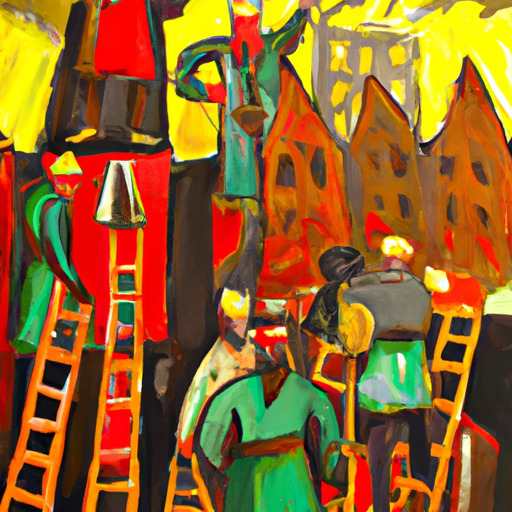
View On WordPress
#16thcentury#adventure#amusement#animatedconversation#assistance#awe#balancingbricks#beautyandharmony#beautyofsound#bricksandbeams#cacophonyoflanguages#chaoticscene#confusion#creator#determination#dusk#Dutchpeople#Enlightenment#expression#Flanders#fusion#Germans#harmony#hope#industriousants#intricacy#Italians#laboring#Language#linguist
0 notes
Photo

Reading Medieval Ruins: Urban Life and Destruction in Sixteenth-Century Japan
Although this is a wonderful read for anyone having a deep infatuation with Japanese history, it mostly appeals to a scholar or a reader who is somewhat familiar with the topic. This, however, should not discourage any passionate readers from attempting this book. Its language style and structure are straightforward. This book looks at Japanese history through the eyes of the author Morgan Pitelka and a common citizen living in the medieval Japanese city of Ichijōdani.
Pitelka avoids tediousness by using fluid language and vibrant imagery while still maintaining an educational and academic stance.
Pitelka's Reading Medieval Ruins contains nothing too logically complex to grasp. On the other hand, it deals with very specific subjects that a person looking for a general overview of Japanese history may not know the meanings or contexts of. An example of this is probably Pitelka's discussion on medieval Japanese medicine. It is an intriguing yet niche topic. Pitelka starts the discussion on medicine without providing much background information. From another perspective, regardless of whether one chooses to read it on its own or not, this book is a fascinating examination of a plethora of topics in a very tumultuous time in Japanese history.
Continue reading...
44 notes
·
View notes
Text
Reproduction of a 16th century yatagan
Made by Ignis Vultus historical reenactment association

#yatagan#ottoman#ottoman empire#sabre#historical#historical reenactment#1500s#16thcentury#photography#blacksmithing#dark academia#dark acadamia aesthetic#history#lowkeyphotography#still life#military history#europe#swords#sword#swordsmithing
9 notes
·
View notes
Text
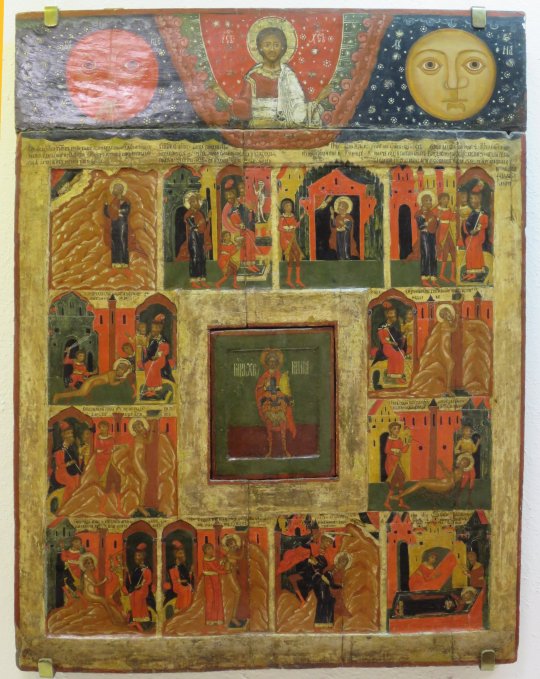
Have you ever heard of Saint Menas of Egypt? He was a martyr, wonder-worker, and soldier in the Roman army, who refused to recant his Christian faith and thus lost his life. The featured 16th-century icon is devoted to this holy figure and depicts scenes from the saint’s life. His feast day is on November 24 of the Gregorian Calendar; however, those who follow the new style or Revised Julian calendar celebrate it on November 11. Nowadays, the icon is held at the Arkhangelsk Regional Museum of Fine Arts in Russia.
#menasofegypt#stmenas#saints#martyrs#wonderworker#christianfaith#16century#16thcentury#russianiconography#christianiconography#iconography#holyicons#russianicons#orthodoxy#easternorthodoxchurch
23 notes
·
View notes
Photo

#ushnishavijaya #giltbronze #tibet #16thcentury #motog825gshot (at Prince of Wales Museum Mumbai) https://www.instagram.com/p/Cprk9F8PWkS/?igshid=NGJjMDIxMWI=
0 notes
Photo

#Brugge is a special city and part of the price of #Belgium. It’s 16tj century #architecture remains fully in tact as of it were built in the #20thcentury. And the chocolate… And #beer… #yalegurney @incredible_europe @europestyle_ @best.europe.photos @living_europeofficial @bestcitiesofeurope @visit_europe @brussels.travel @bestplacesinbelgium @lofficielbelgium @loving_belgium @brugge_citytrip @brugge_citytour @brugge #brugge #bruggebelgium #brugge🇧🇪 #brick #roof #rooftop #16thcentury #travel #travelphotography #travelgram #travelblogger #traveling #iamatraveler (at Brugge-Belgium) https://www.instagram.com/p/CmKYTkyPXQQ/?igshid=NGJjMDIxMWI=
#brugge#belgium#architecture#20thcentury#beer#yalegurney#bruggebelgium#brugge🇧🇪#brick#roof#rooftop#16thcentury#travel#travelphotography#travelgram#travelblogger#traveling#iamatraveler
0 notes